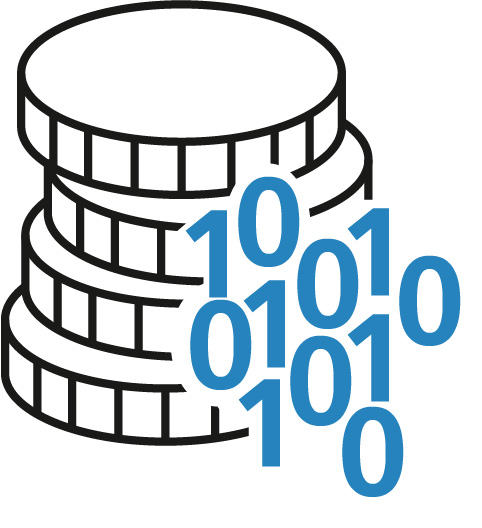
Dr. Riad Bourayou explains a study on the value of data-based services.
The Data Mining and Value Creation project is about creating value from data. But how can the value of data-based services actually be measured? And how is it possible to track changes in living standards through free data-driven services? The gross domestic product (GDP) is the most important measure of economic size and changes in value added. However, it encounters a methodological difficulty: goods and services at zero price do not contribute to GDP.
In their article “Using massive online choice experiments to measure changes in well-being“ from 2019, Erik Brynjolfsson and colleagues suggest using a subjective measure of value creation: consumer surplus. It was defined in the 1940s as the difference between consumers’ willingness to pay for a good and the amount actually paid. For example, if a person would be willing to spend up to €100 on a pair of shoes, but only has to pay €70, that person has gained €30 in consumer surplus from that transaction. This is called an additional benefit that consumers receive because they pay for something less than they were prepared to pay.
Changes in consumer surplus are representative of changes in the well-being (or welfare) of consumers – and thus of the value that a service represents for customers despite the lack of a price tag. The consumer pension is more suitable because the use of balance sheets and annual financial statements in relation to the amounts per customer generally leads to systematic errors. That is because companies often combine several revenue streams. The method in the article by Brynjolfsson et al. thus leads to more detailed insights.
The methodology is based on the trick of reversing the approach: consumers are invited to choose between two options. They are asked to decide whether they want to keep access to a certain service or whether they would give up this service in exchange for a certain amount of money. Thus, the question is not: “How much would you pay to receive service X?” (Willingness-to-Pay, in short: WTP). Instead, it is: “How much would you have to be paid to forego service X?” (Willingness-to-Accept, in short: WTA). The WTP for digital services has always been suspiciously low in past studies; the WTA could be a better measure.
The median (average) of the WTA amounts responded is the value of interest: around this value, as many people accept the loss of access to the goods as there are people who choose to keep access.
In the USA, for example, half of the customers surveyed would do without Facebook for a month – for a compensation of US$48.49. In a European laboratory survey among students, the median values of the WTA were higher:
US$536.00 |
|
US$97.00 |
|
Digital map services on smartphones |
US$59.00 |
US$6.79 |
|
Snapchat |
US$2.17 |
US$1.52 |
|
Skype |
US$0.18 |
The European test persons thus estimated the compensation for the loss of one month's access higher than in the USA.
The authors then extended their survey to a large online population instead of a pool of recruited test persons. They also decided to focus their evaluation method on mass categories rather than on specific services. Therefore, they asked about categories such as email service, social media (all) or Internet search engines (all) instead of individual offers such as Facebook, Instagram, WhatsApp or YouTube.
Their median estimates for foregone usage are therefore significantly higher (WTA, figures per year):
Internet search engines |
US$17,530 |
US$8414 |
|
Digital map services |
US$3648 |
Video services |
US$1173 |
E-Commerce |
US$842 |
Social media |
US$322 |
Companies can thus gain insight into the value of a particular service or category of services over a certain period of time.
The authors suggest that other effects could be taken into account, as is the case for traditional survey methods:
- Influence of the simultaneous use of complementary or competing services (multi-homing)
- Household income
- Impacts of periods of waiver*
*The median value for not using Facebook services for two weeks is 2.7 times higher than the median value for one week. This indicates a non-linear time effect.
The present study already showed geographical effects, since the rating of services such as Facebook was significantly higher in Europe than in the USA.
What the data of individual users are worth to companies offering data-based services is not accessible. Nevertheless, this study provides a quantitative indication of how high a data-driven service is valued. This makes it an important complement for market-based methods of evaluating data.
“Using massive online choice experiments to measure changes in well-being”
Erik Brynjolfsson, Avinash Collis, and Felix Eggers
PNAS April 9, 2019 116 (15) 7250-7255; first published March 26, 2019
https://doi.org/10.1073/pnas.1815663116

